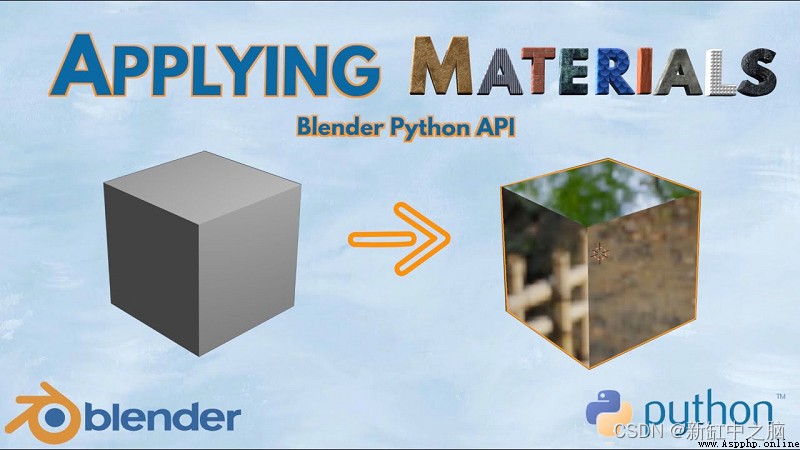This article describes how to use Python to create new materials, add shaders, create new objects, and assign materials to objects in Blender.

First, create a new material.The function takes a string as the name of the new material:
import bpydef newMaterial(id):mat = bpy.data.materials.get(id)if mat is None:mat = bpy.data.materials.new(name=id)mat.use_nodes = Trueif mat.node_tree:mat.node_tree.links.clear()mat.node_tree.nodes.clear()return matThen add shaders to the material.Input shader type (i.e. diffuse, emissive, glossy) and rgb color:
def newShader(id, type, r, g, b):mat = newMaterial(id)nodes = mat.node_tree.nodeslinks = mat.node_tree.linksoutput = nodes.new(type='ShaderNodeOutputMaterial')if type == "diffuse":shader = nodes.new(type='ShaderNodeBsdfDiffuse')nodes["Diffuse BSDF"].inputs[0].default_value = (r, g, b, 1)elif type == "emission":shader = nodes.new(type='ShaderNodeEmission')nodes["Emission"].inputs[0].default_value = (r, g, b, 1)nodes["Emission"].inputs[1].default_value = 1elif type == "glossy":shader = nodes.new(type='ShaderNodeBsdfGlossy')nodes["Glossy BSDF"].inputs[0].default_value = (r, g, b, 1)nodes["Glossy BSDF"].inputs[1].default_value = 0links.new(shader.outputs[0], output.inputs[0])return matThen create the object, assign the material and call the function:
def drawObject():mat = newShader("Shader1", "diffuse", 1, 1, 1)bpy.ops.mesh.primitive_cube_add(size=2, align='WORLD', location=(0, 0, 0))bpy.context.active_object.data.materials.append(mat)drawObject()Original link: Blender Procedural Assignment of Materials — BimAnt